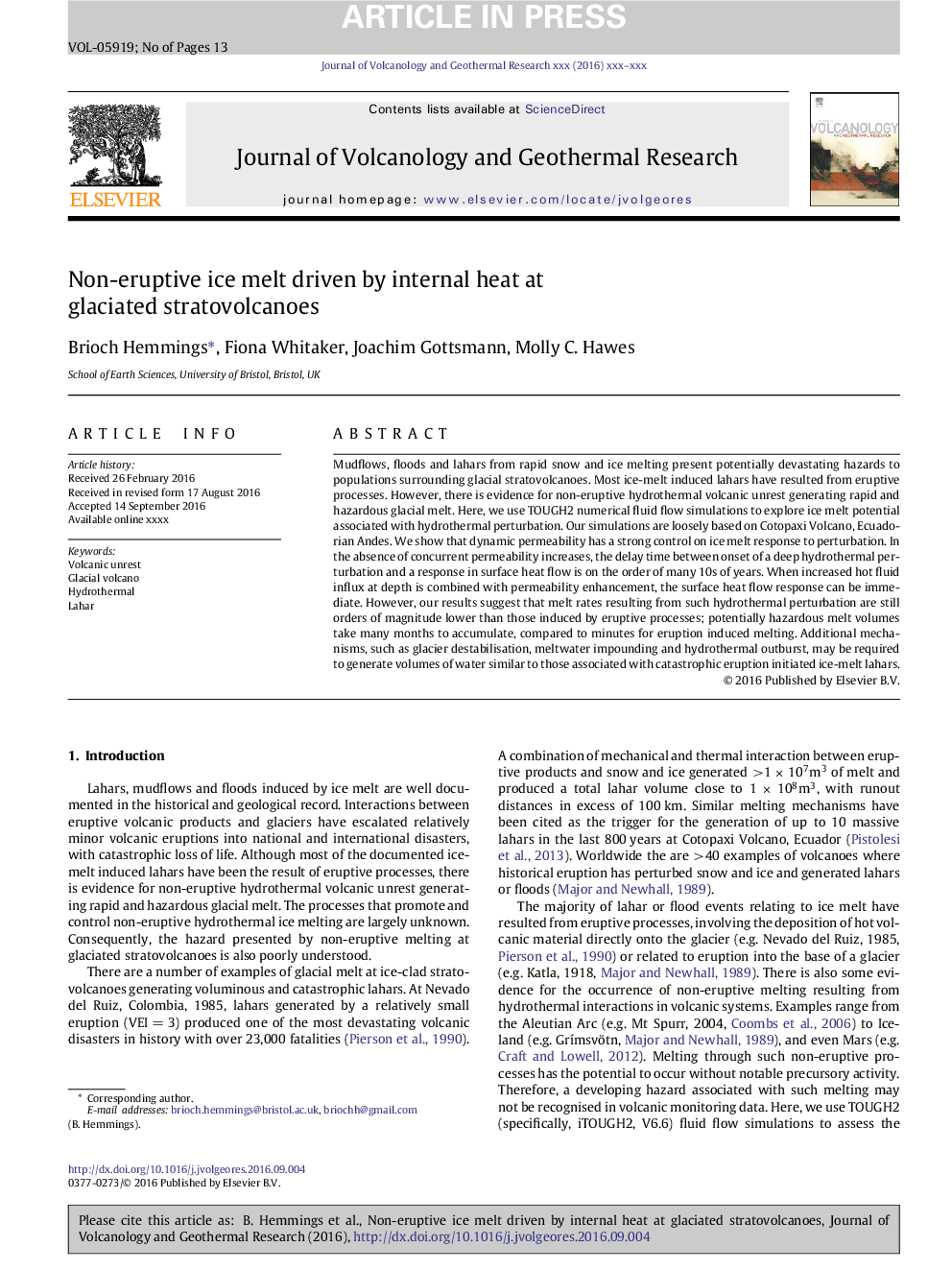| Article ID | Journal | Published Year | Pages | File Type |
|---|---|---|---|---|
| 5783783 | Journal of Volcanology and Geothermal Research | 2016 | 13 Pages |
Abstract
Mudflows, floods and lahars from rapid snow and ice melting present potentially devastating hazards to populations surrounding glacial stratovolcanoes. Most ice-melt induced lahars have resulted from eruptive processes. However, there is evidence for non-eruptive hydrothermal volcanic unrest generating rapid and hazardous glacial melt. Here, we use TOUGH2 numerical fluid flow simulations to explore ice melt potential associated with hydrothermal perturbation. Our simulations are loosely based on Cotopaxi Volcano, Ecuadorian Andes. We show that dynamic permeability has a strong control on ice melt response to perturbation. In the absence of concurrent permeability increases, the delay time between onset of a deep hydrothermal perturbation and a response in surface heat flow is on the order of many 10s of years. When increased hot fluid influx at depth is combined with permeability enhancement, the surface heat flow response can be immediate. However, our results suggest that melt rates resulting from such hydrothermal perturbation are still orders of magnitude lower than those induced by eruptive processes; potentially hazardous melt volumes take many months to accumulate, compared to minutes for eruption induced melting. Additional mechanisms, such as glacier destabilisation, meltwater impounding and hydrothermal outburst, may be required to generate volumes of water similar to those associated with catastrophic eruption initiated ice-melt lahars.
Keywords
Related Topics
Physical Sciences and Engineering
Earth and Planetary Sciences
Geochemistry and Petrology
Authors
Brioch Hemmings, Fiona Whitaker, Joachim Gottsmann, Molly C. Hawes,
